Blog Standard

Dynamic Viscoelastic Analysis of Polypropylene Homopolymer and Block Copolymer
Polypropylene (PP) is a general-purpose resin widely used in industries for manufacturing everyday products such as automobile parts and household electrical goods. Three common types of PP utilized as industrial materials include polypropylene homopolymer (made of propylene only), polypropylene block copolymer (with ethylene), and random copolymer (with ethylene). Each type possesses distinct properties, and their application depends on the desired characteristics of the final product.
Figure 1 illustrates the molecular structures of these PP types. In addition to block PP, the polypropylene block copolymer incorporates polypropylene homopolymer, ethylene propylene rubber (EPR), and PE copolymer. The block copolymer features a sea-island structure, with a continuous matrix phase of PP and a dispersed phase of EPR and PE copolymer domains.
This brief focuses on dynamic viscoelastic measurement of polypropylene homopolymer and polypropylene block copolymer to evaluate their viscoelastic properties of polypropylene.
Experiment
The samples consisted of a commercially available polypropylene homopolymer and a polypropylene block copolymer containing approximately 6% ethylene. Measurements were conducted using the DMA200 Dynamic Mechanical Analyser and the measurement conditions included five frequencies (0.5, 1, 2, 5, and 10 Hz), a temperature range from low temperature (-120°C) to 150°C, and a heating rate of 2°C/min.
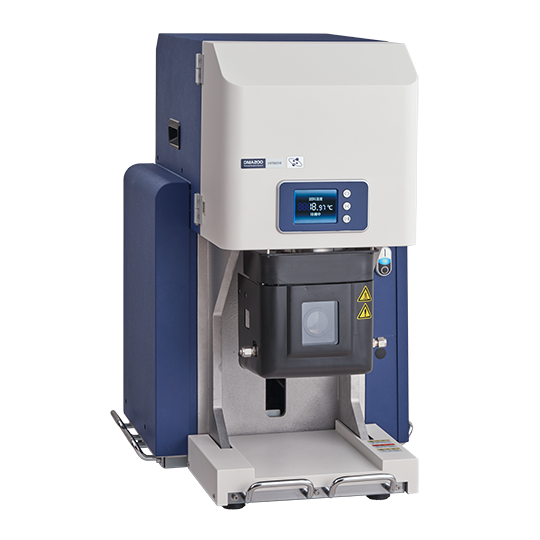
Hitachi NEXTA® DMA200
Homopolymer: −P−P−P−P−P−P−P−
Block Copolymer: −P−P−P−P−E−E−E−
(The compound comprises the following components):
−P−P−P−P−P−P−P− (Polypropylene homopolymer)
−P−P−P−P−E−E−E− (Block PP)
−P−P−E−P−E−P−E− (Ethylene propylene rubber)
−E−E−E−E−P−E−E− (PE Copolymer)
Random Copolymer: −P−P−P−E−P−P−E−
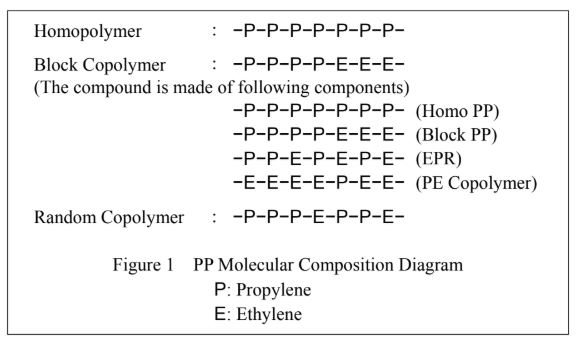
Measurement Results
Figures 2 and 3 present the Dynamic viscoelasticity spectrum of homopolymer and Dynamic viscoelasticity spectrum of copolymer, respectively. These results reflect simultaneous measurements of temperature and frequency dispersion in polymers, displaying Storage modulus (E’), Loss modulus (E”), and tanδ curves across five frequencies (0.5 to 10 Hz).
The polypropylene homopolymer results (Figure 2) reveal three dispersions: α (crystal relaxation), β (glass transition temperature), and γ (local mode relaxation). In contrast, the polypropylene block copolymer results (Figure 3) exhibit an additional peak between -50°C and -30°C on the E” and tanδ curves, likely corresponding to the glass transition temperature of ethylene propylene rubber in the block PP.
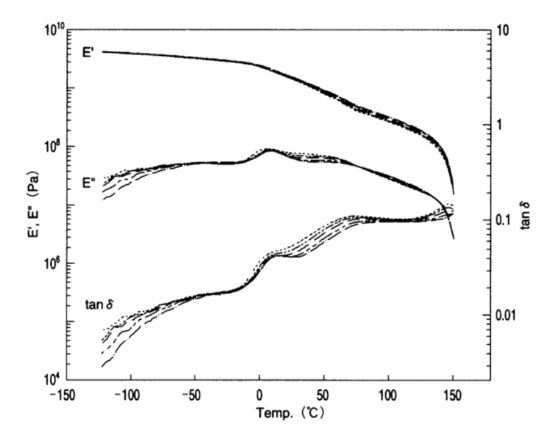
Figure 2 Dynamic viscoelasticity spectrum of homopolymer
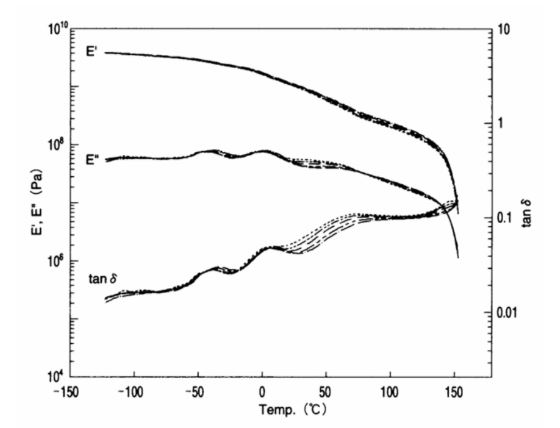
Figure 3 Dynamic viscoelasticity spectrum of copolymer
Figures 4 and 5 display the apparent activation energy derived from the tanδ dispersion peaks in Figures 2 and 3. Similar values were obtained for α-dispersion (crystal relaxation) and β-dispersion (glass transition temperature) for the PP component in both polypropylene homopolymer and polypropylene block copolymer. Additionally, the apparent activation energy of the dispersion peak between -50°C and -30°C in the block copolymer was 292.5 kJ/mol, supporting the attribution to the glass transition temperature of ethylene propylene rubber
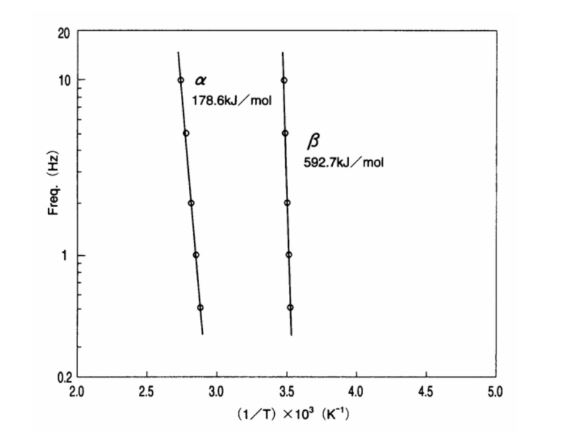
Figure 4 . Apparent Activation Energy for α- and β-dispersion of homopolymer
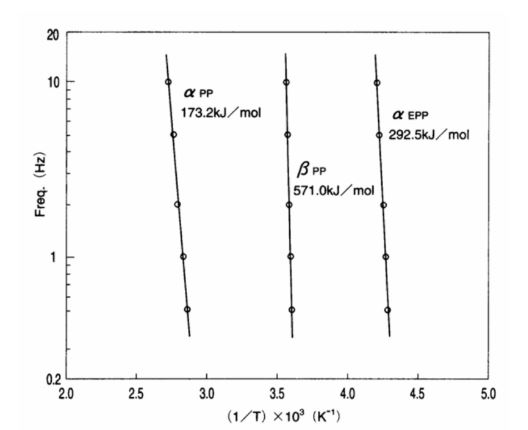
Figure 5 . Apparent Activation Energy for α- and β-dispersion of copolymer
Figure 6 compares the E’ and tanδ curves at 10 Hz for polypropylene homopolymer and polypropylene block copolymer. Below -80°C, both exhibit similar Storage modulus transitions. However, post-EPR dispersion, the Storage modulus of the block copolymer is lower than that of the homopolymer, likely due to the influence of ethylene propylene rubber and PE copolymer domains. Additionally, the tanδ curves indicate higher vibrational absorption in the block copolymer at low temperature below the PP dispersion, attributed to the EPR and PE copolymer domains.
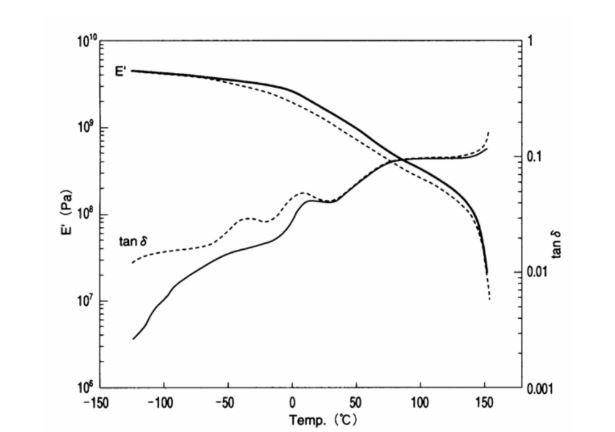
Figure 6 . Comparison of E’ and tanδ Curves for homopolymer and copolymer
Frequency: 1Hz
: homopolymer
: copolymer
Conclusion
This application note demonstrates dynamic viscoelastic measurement of polypropylene homopolymer and polypropylene block copolymer to assess their viscoelastic properties of polypropylene. The polypropylene block copolymer results reveal the glass transition temperature of ethylene propylene rubber alongside the inherent relaxation of PP. Notably, differences in vibrational absorption were observed, particularly at low temperature, highlighting the impact of EPR and PE copolymer domains in enhancing vibrational absorption in block copolymers compared to homopolymers.
Inkarp Instruments is a leading distributor and trusted service partner for Hitachi products in India. Committed to innovation and excellence, Inkarp provides cutting-edge scientific instruments backed by expert support, empowering researchers nationwide to advance their work with confidence.
References:
1. Yasaku. Wada, “Solid Properties of Polymers”, Baihukan (1971)
2. N. Okubo, Application Brief DMS No.7, SII NanoTechnology (1990)

